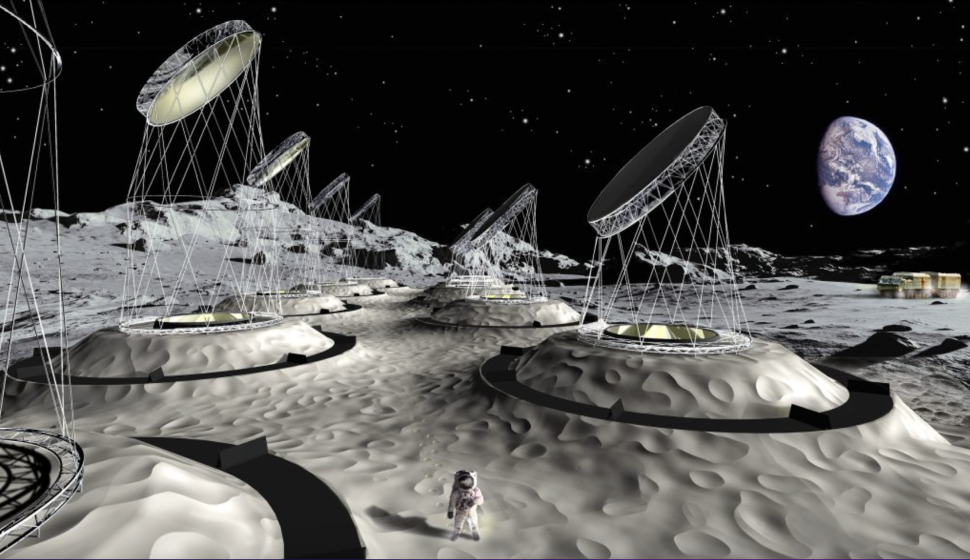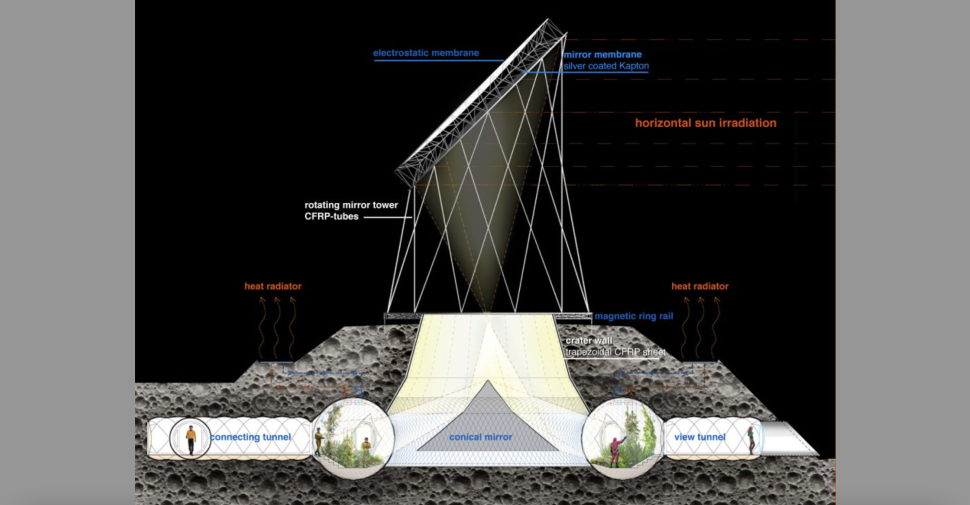12.02.2023
Humanity is going back to the moon to stay — and we might have a way to live there long-term.

Artist's illustration of PneumoCell's proposed "PneumoPlanet" habitats on the surface of the moon. (Image credit: PneumoCell)
Recently, NASA established potential landing sites near the south pole of the moon for upcoming crewed missions of its Artemis program. But how will astronauts survive and thrive in the harsh lunar environment?
One new proposal could help them do so. The Austrian company PneumoCell(opens in new tab)has developed the PneumoPlanet inflatable habitat concept for the moon, which could contain up to 16 greenhouses and house up to 32 astronauts.
"PneumoPlanet is an ultra-light inflatable structure covered by regolith that will operate self-sufficiently by producing and recycling its own oxygen and food using solar power," Philipp Gläser, a postdoctoral researcher at the Berlin Technical University and a co-author on a study outlining the PneumoPlanet concept, told Space.com in an email.

Design of PneumoCell's proposed "PneumoPlanet" moon habitat. Living quarters would be underground, to shield inhabitants from the harsh environment of the lunar surface. (Image credit: PneumoCell)
"It can therefore serve as a permanent lunar outpost enabling various future missions to use it as a base," Gläser added. "The habitat protects against cosmic radiation and micrometeorites, keeping the crew safe and allowing for longer mission durations."
PneumoPlanet has received funding from the European Space Agency. The new study suggests the habitat be located near one of the lunar poles, where sunlight is more plentiful given the moon's extremely slight axial tilt. Ideally, PneumoPlanet would be set up close to a "permanently shadowed region" (PSR), a polar crater floor that has been in darkness for eons and therefore might harbor large amounts of water ice.
The architect and lead designer of PneumoPlanet is Thomas Herzig, who is also the founder and CEO of PneumoCell. Herzig said he's passionate about PneumoPlanet and its potential for assisting future lunar astronauts, stressing that no other habitat concept offers what PneumoPlanet can in terms of the overall design, specifically pertaining to the greenhouse.
"All the effort and energy for 3D printing of massive walls and ceilings is not necessary," Herzig told Space.com in an email. "The most important innovation lies in the mirrors that reflect the visible sunlight in an optimal wavelength range into a greenhouse, while all the harmful particle radiation is kept out. Inside that greenhouse, we can self-sufficiently produce oxygen and food in a natural way from natural sunlight only, and the greenhouse also is a natural living space for the crew."
As Herzig states in a promotional video(opens in new tab), PneumoPlanet'smirrors will be hoisted with carbon fiber tubes on a rotating magnetic ring that will track the direction of sunlight. This will allow natural sunlight to pass through a transparent foil and enter the greenhouses with 65 kilowatts of energy, which is equivalent to 265 watts per square meter — ideal for photosynthesis to take place, Herzig said. With humans scheduled to return to the lunar surface in the next few years with the Artemis missions, could PneumoPlanet be a viable tool for their habitat?
"While several nice renderings of moon habitats have been released to attract the attention of the public, until now, no permanent and sustainable moon base is part of the planned Artemis mission[s]," Herzig said.
He described the current big-picture plan for Artemis, which involves building a small moon-orbiting space station called Lunar Gateway to send astronauts to the surface and having them sleep in a rover there for a few days. However, NASA has outlined plans to establish some infrastructure potentially near PSRs on the lunar surface, including a four-person habitat, as part of its Artemis Base Camp outpost. Herzig also noted that the Gateway will not have the same benefits of protection from cosmic radiation as the International Space Station, since the latter orbits within Earth's magnetic field.
"I think it is a pity to put all that effort into a lunar space station, instead of building something on the moon, where you can use the resources of the moon, provide better safety and comfort for the crew and conduct experiments and industrial processes on the moon," Herzig said. "But since the Artemis mission has been delayed so many times, maybe NASA will change their mind about Lunar Gateway and a permanent moon base in future."
The project is described in a paper(opens in new tab) published in December 2022 in the journal Planetary and Space Science. More details can be found at PneumoCell's website(opens in new tab).
Quelle: SC
